No.4
Elastic adhesive
Features
What is elastic adhesive?
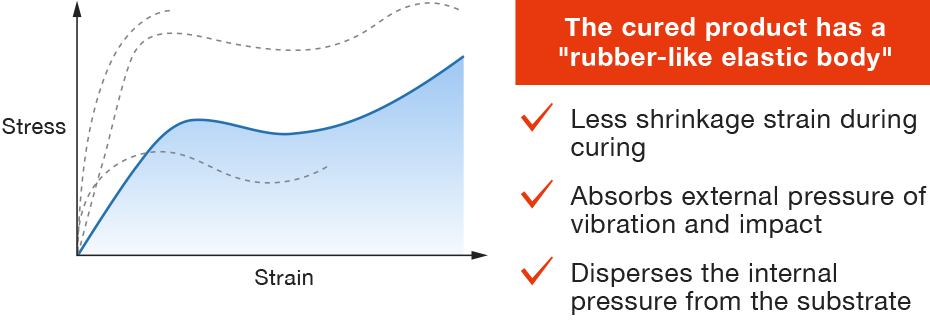
-
Hard and friable
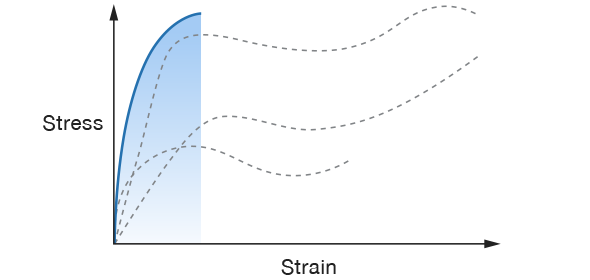
For instance, glass is classified as this type.
-
Soft and weak
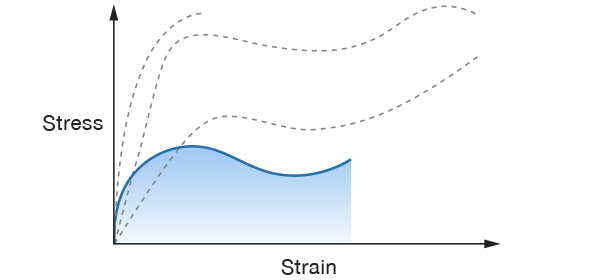
For instance, rubber is classified as this type.
-
Soft and viscous
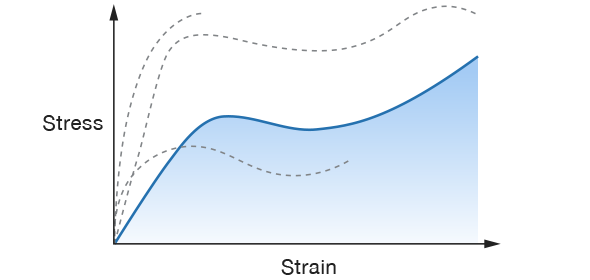
Cured object of elastic adhesive corresponds to this type.
-
Hard and viscous
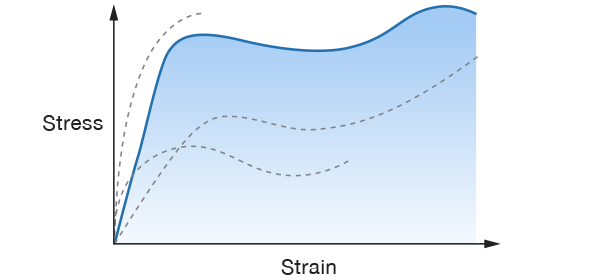
Cured object of structural adhesive corresponds to this type.
Types of elastic adhesives
ThreeBond's elastic adhesives are roughly classified into the following three types according to differences in the main components.
- 1.Silicone (1220 series)
- 2.Modified silicone (1530 series)
- 3.Blend of modified silicone and epoxy (3950 series)
Comparison of silicone and modified silicone
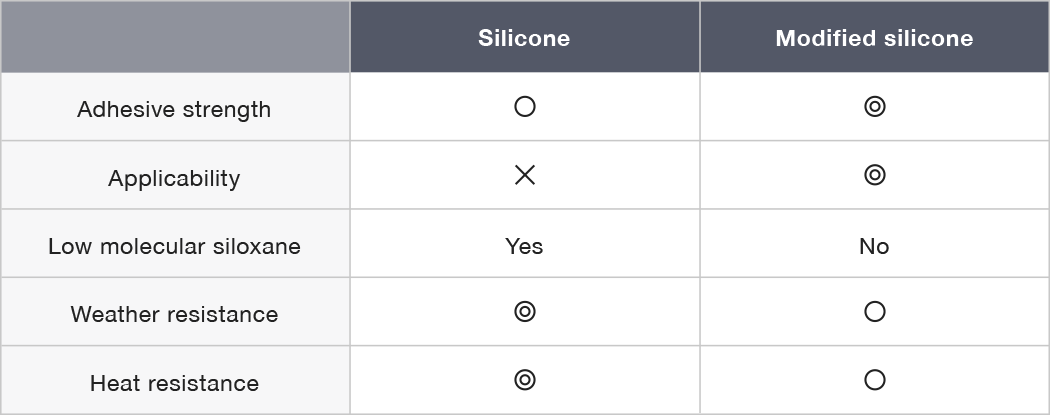
The distinctive advantages of each are that silicone has excellent heat resistance and that modified silicone can be painted.
Comparison of elastic adhesives and epoxy-based adhesives
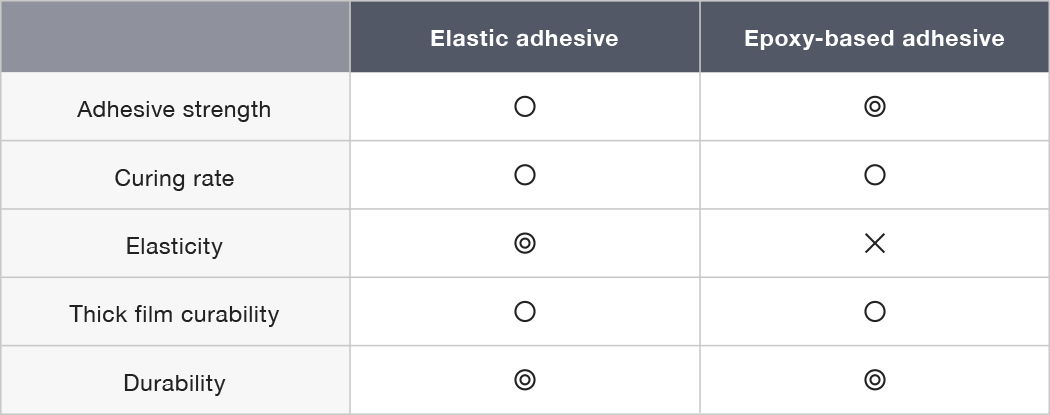
Both exhibit excellent functions, but the fact that the cured product exhibits elasticity is a distinctive feature of elastic adhesives.
Curing method
Moisture curability of elastic adhesive
Elastic adhesives cure by reacting with moisture in the air.
The curability is shown in the graph below using ThreeBond 1530 as an example.
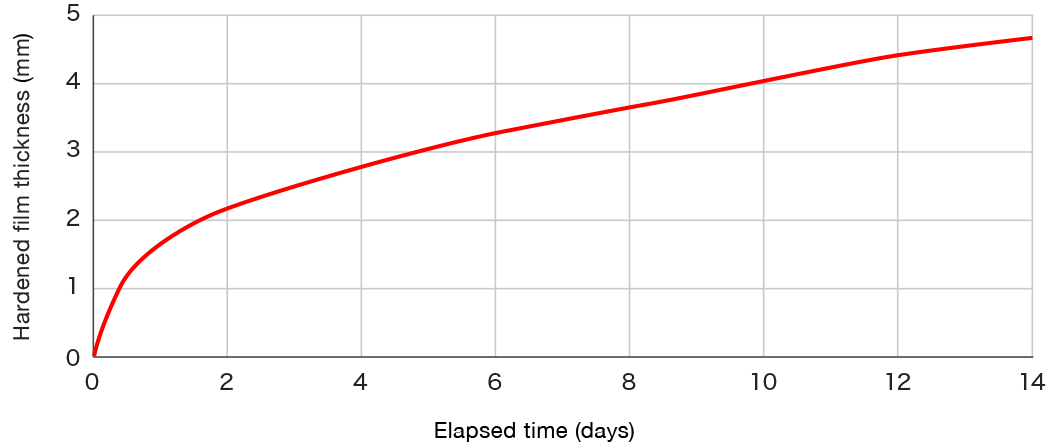
Standard curing conditions: 23°C, 50%RH × 7 days. Pay attention to deep-section curability.
Hardens by reacting with moisture in the air
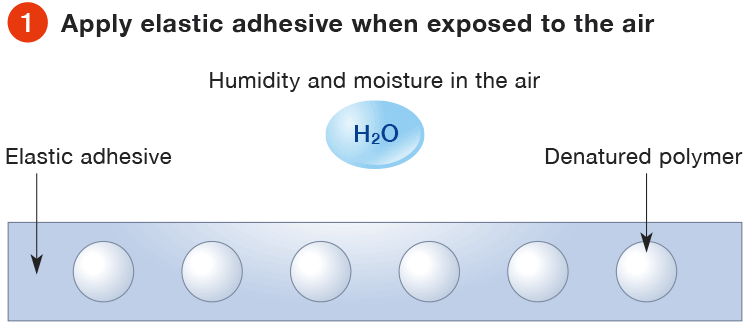
Deep-section curability of elastic adhesive
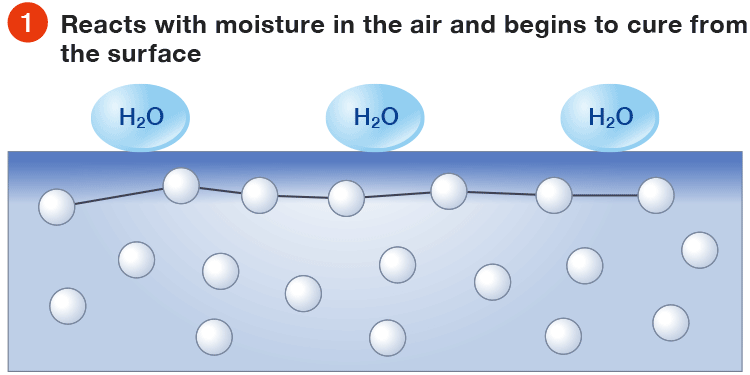
Moisture curing properties of elastic adhesives
The typical curing properties of ThreeBond's elastic adhesives are shown below.
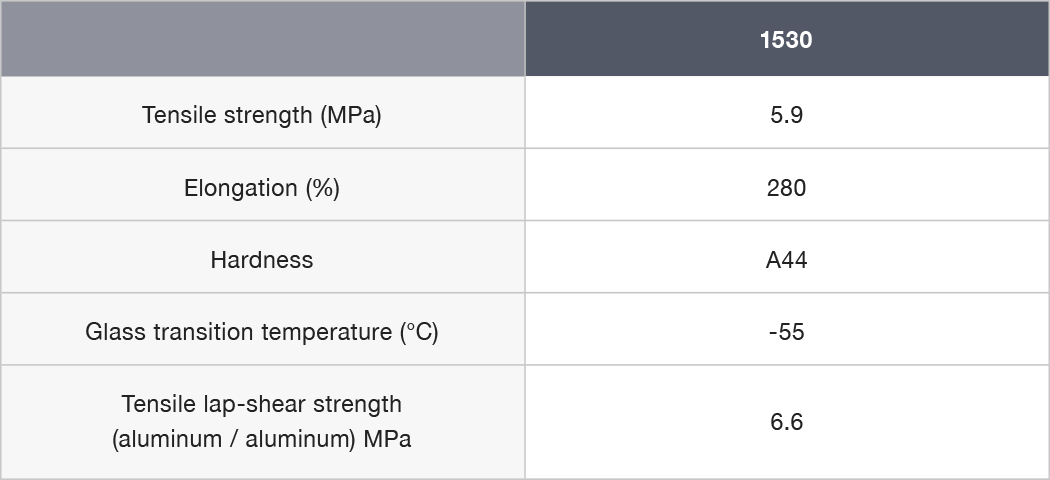
Uses
Examples of adoption in a wide range of fields
- Fixing/bonding of automobile parts
- Adhesion/sealing of electrical/electronic/medical equipment
- Adhesion/sealing of various household items
- Adhesion of various metals, plastics, and rubber
Elastic adhesives are adhesives that provide excellent adhesion to a wide range of materials.
FAQ
-
Q
What is the heat resistant temperature of elastic adhesives?
-
A
Please consider about 120°C as a guide.
-
Q
Does it adhere to polyethylene and polypropylene?
-
A
Adhesion with the general grade is difficult. Please consider ThreeBond 1533F, which is a special grade.
-
Q
Is there a way to bond quickly?
-
A
Please consider "double-sided application" as a method to enhance the initial adhesive strength.
<Procedure for double-sided application>
① Apply thinly and evenly on both surfaces to be adhered.
② Leave it for about 5 to 10 minutes.
③ As soon as adhesiveness such as that of adhesive tape appears, attach surfaces and press firmly to fix them together.
Precautions for use
- Remove any water, oil, rust, and other stains on the surfaces thoroughly before use.
- Fix bonded item until the product cures and do not move it.
- Since it cures by reacting with the moisture in the air, the thickness of the adhesive, the temperature at the time of curing, and the relative humidity affect the curing time.
Summary
Elastic adhesives form a tough, flexible rubber-like elastic body after curing.
As a highly functional universal adhesive that is resistant to vibration and impact and has excellent stress relaxation, it can be used with confidence in a wide range of fields.
At ThreeBond, we strive to create products that best meet your design requirements.

Based on a special denatured polymer, it is a high-performance adhesive that exhibits tough rubber-like elasticity and suits a wide range of adhesion.